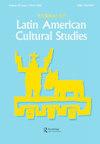Foreign Faces, Trusted Portraits: Carlos Baca-Flor’s Painted Faces between Paris and New York
IF 0.3
4区 社会学
Q4 CULTURAL STUDIES
引用次数: 0
Abstract
AbstractThis article explores the work of the Peruvian painter Carlos Baca-Flor, who was the best-paid portraitist of his time and who painted over a hundred of New York’s most powerful people in the first few decades of the twentieth century. His most famous work is undoubtedly his portrait of James Pierpont Morgan, a painting whose careful, illusionistic precision was praised for the clarity with which it captured an essential truth about Morgan’s character. This portrait assumes greater complexity, however, when viewed alongside earlier works created by the artist in Paris. There, he navigated the pressures of his Latin American identity and adopted a Post-Impressionist approach to the face which seemed to detach the face from the personhood it represents. With this incongruity in mind, this article considers Baca-Flor’s Morgan portrait as part of a larger exploration of faces and what they can communicate about the racial and national identities of their subjects.Keywords: Peruportraitureimpressionismracefinanceepistemologyfacephysiognomymestizaje Disclosure statementNo potential conflict of interest was reported by the author(s).Acknowledgment of fundingResearch for this article was enabled by a generous gift from the Stronach family to support travel within the U.C. Berkeley History of Art department.AcknowledgmentsEarly versions of this paper were greatly improved by detailed suggestions from Lisa Trever, Lauren Kroiz and Darcy Grimaldo Grigsby. I extend my thanks to them, the anonymous reviewers of the manuscript, and to the editors of this journal, for their thoughtful and encouraging feedback.Notes1 Baca-Flor had arrived at the Accademia San Luca in Rome in 1889 on a scholarship from the Peruvian government. The Peruvian government hoped that the young painter would produce historical representations of Peru on an international stage and cultivate the budding tradition of Peruvian national painting. Baca-Flor’s responsibility to the Peruvian government is detailed most clearly in Kusunoki, Majluf and Wuffarden’s Carlos Baca-Flor: El último académico (2013, 42–69).2 Most recently, the Museo de Arte de Lima has emphasised the “paradoxical heterodoxy” of the artist’s seemingly perverse return to academic, highly finished portraits like Morgan’s that reflect cohesive figuration “in a sense opposed to that of modernity” (Kusunoki, Majluf, Wuffarden Citation2013, 37).3 Cathy Boeckmann (Citation2000), for instance, has historicised the ways in which the fields of physiognomy and phrenology in the USA assisted the notion that “racial character” not only existed, but was visible. Boeckmann shows how scientific discourse between the years of 1892 and 1912 shifted towards an interiorised language of “character” in order to accommodate the failure of the visible in identifying racial passing, thus facilitating a keener differentiation not just between Black and white, but also between, say, Irish and Anglo-Saxon. By making character visible, physiognomy and phrenology also made racial character, and thus race itself, yet again something that could be detected on the surface.4 Natalia Majluf’s Inventing Indigenism (Citation2021) offers an excellent discussion of the unstable meanings of race brought up by early indigenism, told through an analysis of the Peruvian artist Francisco Laso. Majluf discusses the ways in which indigenism and the construction of Peruvian identity in general were constructed around the “Indian as ethnoracial concept”, a construct which both was and was not mapped onto a specific set of phenotypic features, and which also variably projected onto mestizo bodies like the one painted in Laso’s Inhabitant of the Cordilleras of Peru (1855).5 Marisol de la Cadena (Citation2000), for instance, has described the ways in which concepts of race have shifted in Peru throughout the twentieth century, underscoring the ways in which mestizo bodies might be understood as white or Indigenous, depending on the context.6 It is difficult not to think of Clark’s (Citation1985) reading of Manet’s barmaid in Un bar aux Folies Bergère (1882). Clark offers a resolution to her characteristically unreadable facial expression, arguing that Manet substitutes the absence of identity of the face for what he calls “the face of fashion” to obscure an earlier notion of class identity as inseparable from one’s character.Additional informationNotes on contributorsGrace KuipersGrace Kuipers is currently a postdoctoral fellow at Princeton’s High Meadows Environmental Institute. Her research interests converge around issues of race and imperialism in the twentieth-century art of the Americas.外国面孔,值得信赖的肖像:卡洛斯·巴卡-弗洛在巴黎和纽约之间的绘画面孔
摘要本文探讨了秘鲁画家卡洛斯·巴卡-弗洛尔的作品,他是当时收入最高的肖像画家,在20世纪头几十年里,他为一百多位纽约最有权势的人物画过肖像。他最著名的作品无疑是詹姆斯·皮尔庞特·摩根(James Pierpont Morgan)的肖像,这幅画细致而逼真,因其清晰地捕捉到了摩根性格的本质真相而受到称赞。然而,当与艺术家在巴黎创作的早期作品一起观看时,这幅肖像呈现出更大的复杂性。在那里,他克服了拉丁美洲身份带来的压力,并采用了后印象派的方法来处理面部,这种方法似乎将面部与它所代表的人格分离开来。考虑到这种不协调,本文认为巴卡-弗洛尔的摩根肖像是对面孔的更大探索的一部分,以及他们可以传达的关于其主题的种族和国家身份的信息。关键词:人物肖像;印象主义;财务;认识论;这篇文章的研究得到了Stronach家族的慷慨捐赠,以支持加州大学伯克利分校艺术史系的旅行。在Lisa Trever, Lauren Kroiz和Darcy Grimaldo Grigsby的详细建议下,本文的早期版本得到了极大的改进。我要感谢他们,手稿的匿名审稿人,以及本刊的编辑,感谢他们周到和鼓舞人心的反馈。注1巴卡-弗洛尔于1889年获得秘鲁政府的奖学金来到罗马的圣卢卡学院。秘鲁政府希望这位年轻的画家能够在国际舞台上展示秘鲁的历史,并培养秘鲁民族绘画的新兴传统。在Kusunoki、Majluf和Wuffarden的《Carlos Baca-Flor: El último acaad mico》(2013,42-69)中,详细阐述了Baca-Flor对秘鲁政府的责任最近,利马艺术博物馆(Museo de Arte de Lima)强调了艺术家看似反常地回归学院派的“矛盾的异端”,像摩根的高度完成的肖像,反映了“在某种意义上反对现代性”的凝聚力形象(Kusunoki, Majluf, Wuffarden Citation2013, 37)例如,Cathy Boeckmann (Citation2000)将美国的面相学和颅相学领域协助“种族特征”不仅存在,而且是可见的概念的方式历史化了。Boeckmann展示了1892年到1912年之间的科学论述如何转向一种内化的“性格”语言,以适应在识别种族传递方面可见的失败,从而促进了不仅黑人和白人之间,而且爱尔兰人和盎格鲁-撒克逊人之间更敏锐的区分。通过使性格可见,面相学和颅相学也使种族性格,从而使种族本身,再次成为可以从表面上发现的东西Natalia Majluf的《发明本土主义》(Citation2021)通过对秘鲁艺术家Francisco Laso的分析,对早期本土主义带来的种族不稳定意义进行了极好的讨论。Majluf讨论了土著主义和秘鲁身份建构的方式,这些方式通常是围绕“印第安人作为种族概念”构建的,这种构建既可以也可以不映射到一组特定的表型特征上,也可以不同地投射到混血儿身上,就像Laso的《秘鲁科迪勒拉斯的居民》(1855)中所描绘的那样例如,Marisol de la Cadena (Citation2000)描述了整个20世纪秘鲁种族概念的变化方式,强调了混血儿身体可能被理解为白人或土著的方式,这取决于背景我们很难不想到克拉克(Citation1985)在《愚人的酒吧》(1882)中对马奈的酒吧女招待的解读。克拉克提出了一个解决马奈特有的难以读懂的面部表情的方法,他认为马奈用他所谓的“时尚之脸”代替了面部身份的缺失,以模糊早期的阶级身份与一个人的性格不可分割的概念。格蕾丝·柯伊伯斯格蕾丝·柯伊伯斯目前是普林斯顿大学高梅多斯环境研究所的博士后。她的研究兴趣集中在20世纪美洲艺术中的种族和帝国主义问题上。
本文章由计算机程序翻译,如有差异,请以英文原文为准。
求助全文
约1分钟内获得全文
求助全文

 求助内容:
求助内容: 应助结果提醒方式:
应助结果提醒方式:


